During the summer I bought a Foveon-based camera, the Sigma DP2s. The DP2s was released in 2010, a minor update to the DP2. I’d always wanted to try a Foveon camera and I thought I had a reasonable buy at just over £220. I knew the DP2s ate batteries for breakfast, but the battery in my example was exhausted and powered about 12 shots before giving up. I needed batteries, lots of batteries, but the Sigma’s BP-31 cell, aka the SLB-1237, turned out to be obscure and difficult to source.
I bought two new third party batteries from Germany. I discovered that the same cell had been used to power just four Samsung digicams: the L55, the L85, and their wide angle variants, the L55W and the L85W. The Digimax L55 comes from 2005; the Digimax L85 comes from 2006. The SLB-1237 or BP-31 really is obscure. This begs the question: why did Sigma use a five-year old battery design in a premium camera? And one that had only been used in four Samsung point-and-shoots.
I searched an auction site for the Samsung cameras. The L55 is cheap. The L85 is even cheaper. Cheap enough to take a chance on the camera to get the battery. I bought an untested Samsung L85 for £10. The camera, the battery, but no charger. Sold as seen, no returns, spares or repair. I thought it was worth a punt for the battery. The DP2s then shed its flimsy rubber USB socket cover and I decided to return it. I was disappointed. I’d coveted the Foveon-based Sigma and ended up with a Samsung digicam. And three batteries.
The Samsung Digimax L85
Samsung claimed that the Digimax L85 was that it was the world’s first HDMI connectable camera. In 2006 this was probably a big claim, but I’m sure no-one remembers the innovation now or its connection with this digicam. Of course Samsung made a proprietary HDMI connection, so you needed their cables to enjoy the HDMI magic. And the fine print on the camera’s sticker said the HDMI link was an option. The manual said you had to buy a docking station to connect it to your TV. In 2006 the camera’s list price was US$500! That was a lot of money 20 years ago and I don’t think many people forked out for the extra kit. Most people probably didn’t have HDMI TVs.
The Digimax L85 was pitched in Samsung’s Prestige line of cameras. The specifications seem reasonable for 2006, even without the elevated and slightly disingenuous HDMI claims:
1/1.8 inch sensor (7.5mm x 5.3mm) CCD sensor with 8.1 megapixels
Schneider-Kreuznach Varioplan branded 5x zoom 7.8mm-39mm (5x crop factor gives 39mm-195mm in analogue terms)
f2.8-f4.4 variable aperture over the zoom range
ISO 50, 100, 200, 400
Shutter 1/2000-15 secs
2.5 inch LCD with 230K pixels
The Digimax L85 build quality must be quite good. This digicam is 20 years old and it’s still working. The body seems to be a tough, hard-wearing plastic. The surface is smooth and glossy now, but on purchase the body would have had a textured, grippy covering. The top plate might be metal but the bottom plate is silver plastic. The buttons and dials have survived twenty years of use and still function as they should. The L85 weighs around 200 grams; it feels good to hold. There is a small finger grip on the front of the body which helps with stabilising the camera. Some variants had a Samsung SHD lens, but with the same zoom range and maximum aperture. The W version offered a 28 mm wide angle zoom lens.
On the top plate there’s a mode dial that offers settings for Auto, Program, AS (aperture or shutter adjustments), M (aperture and shutter adjustments) and Wide (16:9 ratio – the standard image setting is 4:3). There is a continuous shooting mode, a scene mode and a movie setting to complete the options. This seems quite comprehensive for what was really a point-and-shoot digital camera.
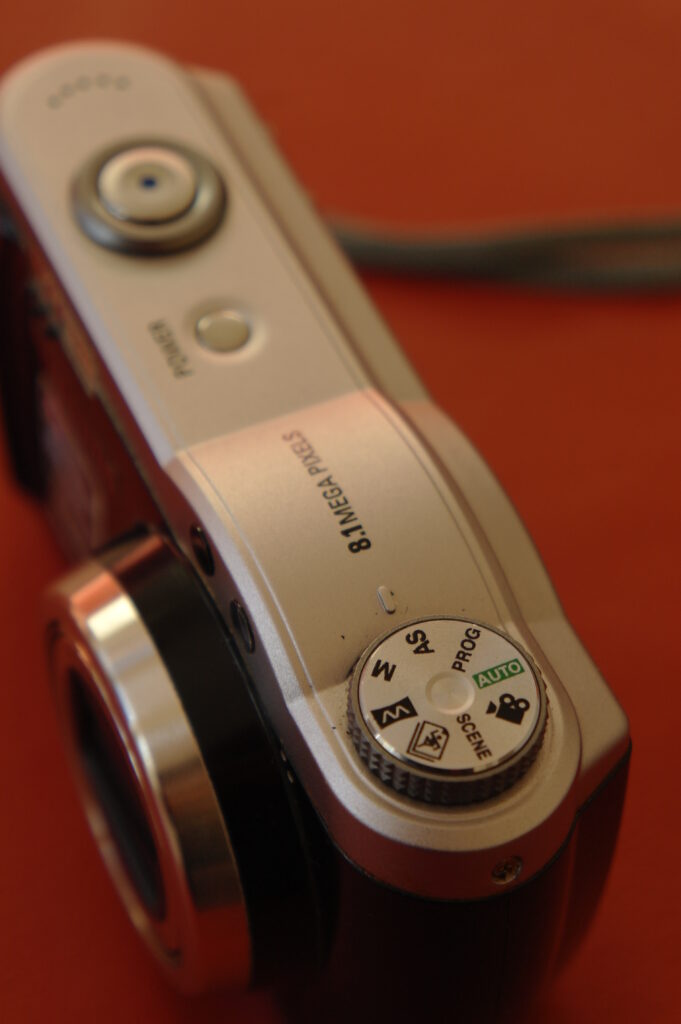
The styling is oddball. Most simple cameras in 2006 were credit card sized and had a silver or black metallic finish (if not a metal body). The Digimax L85 is quite chunky, and reviewers commented favourably on the ‘retro’ look. The camera had piqued my interest. It was different.
The ‘New to Me’ Digimax L85
I decided to clean up the Samsung. It looked neat and tidy. I charged all three batteries and returned the Sigma. The Samsung powered up straight away. The lens was clean; the camera took photos. Quite good photos in fact. My £10 punt had paid off, but not as I had anticipated. I decided to keep the camera, at least for a while. I decided to use it to find out a bit more about digital photography. The Digimax is attractive because its customisation options are approachable, understandable, and accessible. This is a simple camera to explore and enjoy, without being too precious about its safety or being fazed by its complexity.
The L85 in Use
The camera is surprisingly intuitive to use. The controls just seem to fall into place and the humble camera encourages experimentation and exploration. I downloaded the manual from the Samsung website. However the functionality will be familiar to photographers who have used digicams from the era.
The ASM Button
The buttons on the rear of the camera link quite intuitively to the mode dial settings. The ASM button is the top one in a three button array on the back of the camera. ASM refers to aperture, shutter and manual settings. After pressing this button, the aperture or the shutter speed can be altered (in AS mode), or both parameters can be changed in the Manual mode. The five way dial on the back of the body changes the settings: left and right for shutter speed adjustments; up and down for aperture adjustments. This makes the camera very flexible and easy to experiment with, without using a menu-driven system that is found on many digicams.
The +/- button is the third in the array. This allows for four adjustments: exposure, white balance, ISO and RGB scales. There are +/- 2 stops of exposure adjustment, a typical range of WB settings (including the option to set a custom WB), ISO settings in four steps (up to a maximum of 400), and the ability to dial in changes to the red, green and blue channels. The E button accesses a range of effects settings including a monochrome option.
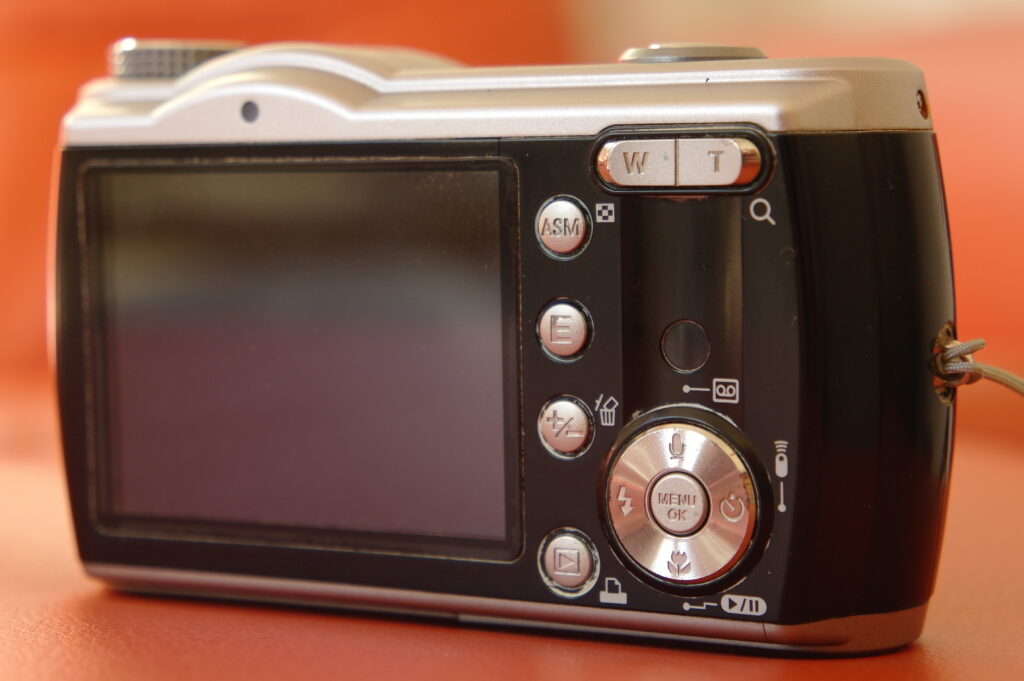
These features encouraged me to explore different ways of using the camera. I experimented with white balance and the RGB options. I learnt that customising the WB settings and the RGB levels in camera had a profound affect on the image. Warm and cool light – heat the image or cool it down. In the past I’d just set auto WB on cameras and left it at that. A bit of fiddling demonstrated that the cloudy WB setting lent warmth to the images. Stepping the red or blue channel up or down altered the mood of the image. This was new to me and it was a discarded digicam that was allowing me to explore the qualities of light.
Macro
The Digimax L85 has two levels of macro settings – a ‘normal’ macro and a super macro. The latter allows very close focussing. The images below demonstrate how effective this can be. Opening up the aperture to the maximum f2.8 and setting the super macro opens up a world of image making that I had explored with other cameras with more or less success. The L85 is light and easy to hold and this makes it easy to get within a few centimetres of an object to photograph details. The macro choices are available on the five-way dial and tapping the bottom of the rocker cycles through standard, macro and super macro settings.
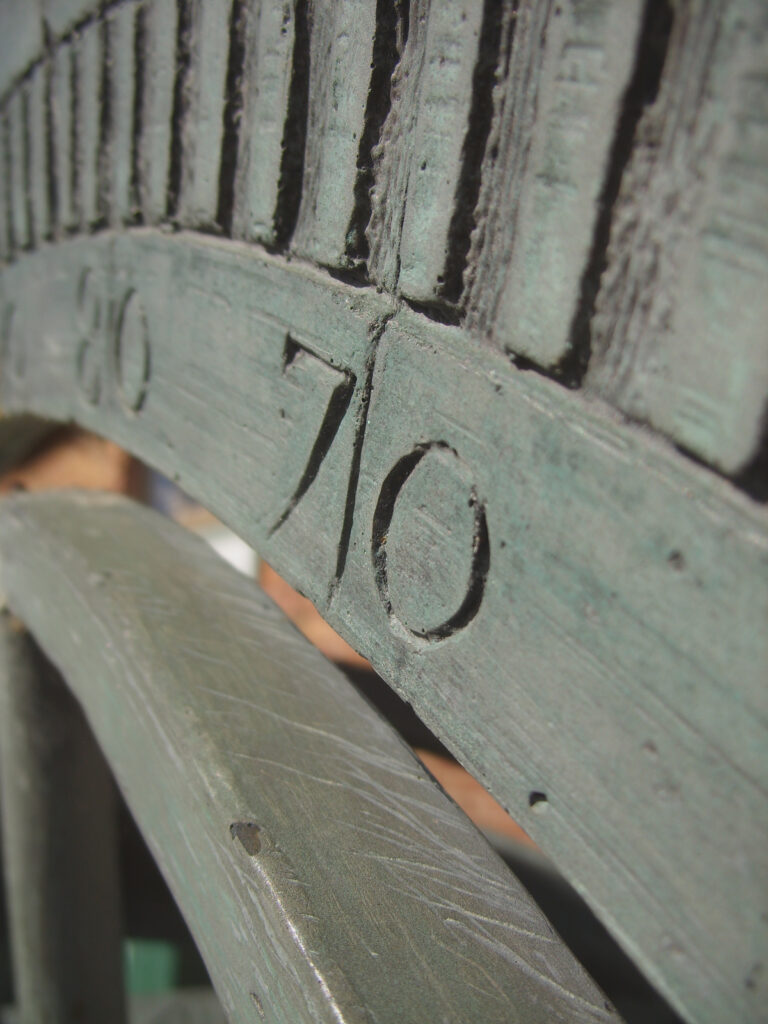

Menu Settings
Digging around in the menus revealed some interesting features. The menu button in the centre of the five-way dial accesses a range of settings including sharpness (Soft, Normal and Vivid), image size, quality (including TIFF), shooting modes (including AEB), autofocus and metering settings, and display settings (including a screen with a histogram). For a 2006 point-and-shoot this seems a comprehensive set of options. I’m experimenting at the moment recording 8mp TIFF files (about 80 on 2GB SD card), spot metering and centre-weighted AF. All the parameters are simple to set. The LCD screen gives a reasonable image, even in bright light, and the impact of changes made on the fly can be evaluated. I am learning a lot about digital image-making shooting a twenty year old digicam that I didn’t think I would use.
Some More Samples
The following images demonstrate some of the other versatility of the L85. The first photo was shot straight into the low late September sun. This type of shot would be a challenge for most cameras, especially those with more limited capabilities and less modern tech like the L85. I’ve edited it lightly in Darktable. However this is a TIFF to Jpeg conversion that has not been heavily worked

The zoom capability is incredibly flexible. Shooting at maximum reach needs a steady hand and some additional support for the camera. There is absolutely no in-camera stabilisation in the Digimax. I took the following picture resting on the flood wall. I was impressed by the clarity and contrast in this image. It’s not much of a photo, but shows the possibilities for distance shots.

Provisional Conclusions
On release the Digimax L85 divided opinions amongst reviewers. Some thought it was rubbish; others thought it was a capable camera that produced good quality images. I’m not going to pass judgement just yet, save to say that the L85 doesn’t seem to be rubbish. I used a Nikon D80 for a number of years. It was a great camera and produced lovely images when I had set the camera up well for the conditions and light. But it was heavy, complex and quite a challenge to use. This will sound odd: the L85 is a lot that the D80 wasn’t, and is much that the D80 was. Most of the D80’s customisability is in the L85, but in a simpler form, and without the weight, lens changing and complex menu structures.
Of course it would be foolish to compare the Digimax L85 to the DP2s or the D80. The Sigma and Nikon are leagues apart from the humble Digimax. I wouldn’t have given the Samsung any thought had it not been for the DP2s’ appetite for batteries. But the £10 Samsung has turned out alright. I can slip it into a pocket on a cycling top and head off on my bike without worrying about breaking a pricey camera. I can slip it into a shirt pocket and go off for a walk and quickly photograph something that’s caught my eye. It’s discrete, quiet and unassuming.
I’ll hold on to the Samsung Digimax L85 for a while, to keep learning and enjoying this surprising camera, but I think it’s a camera others might enjoy too so it might end up in a charity shop window one day.
Share this post:
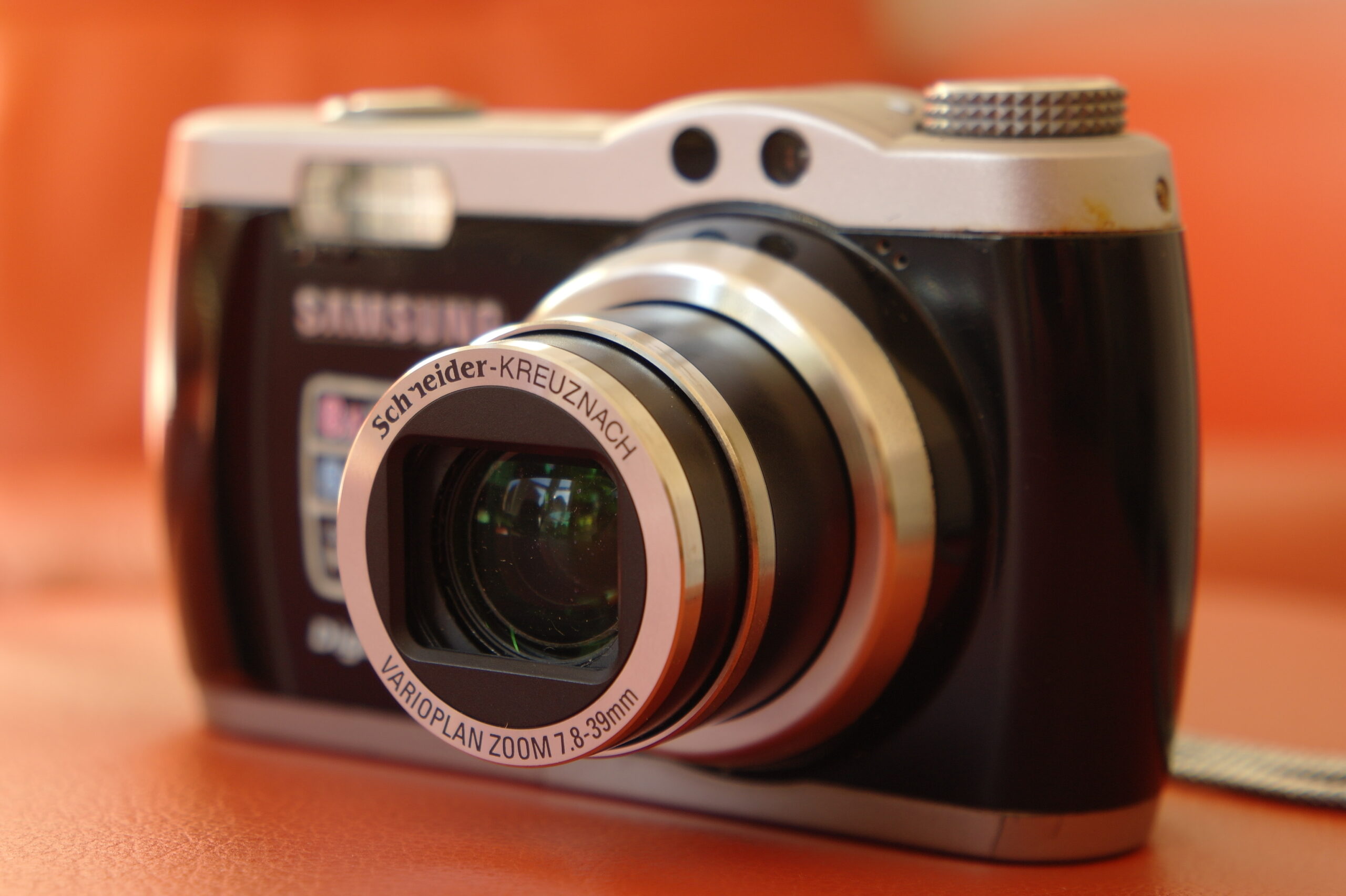
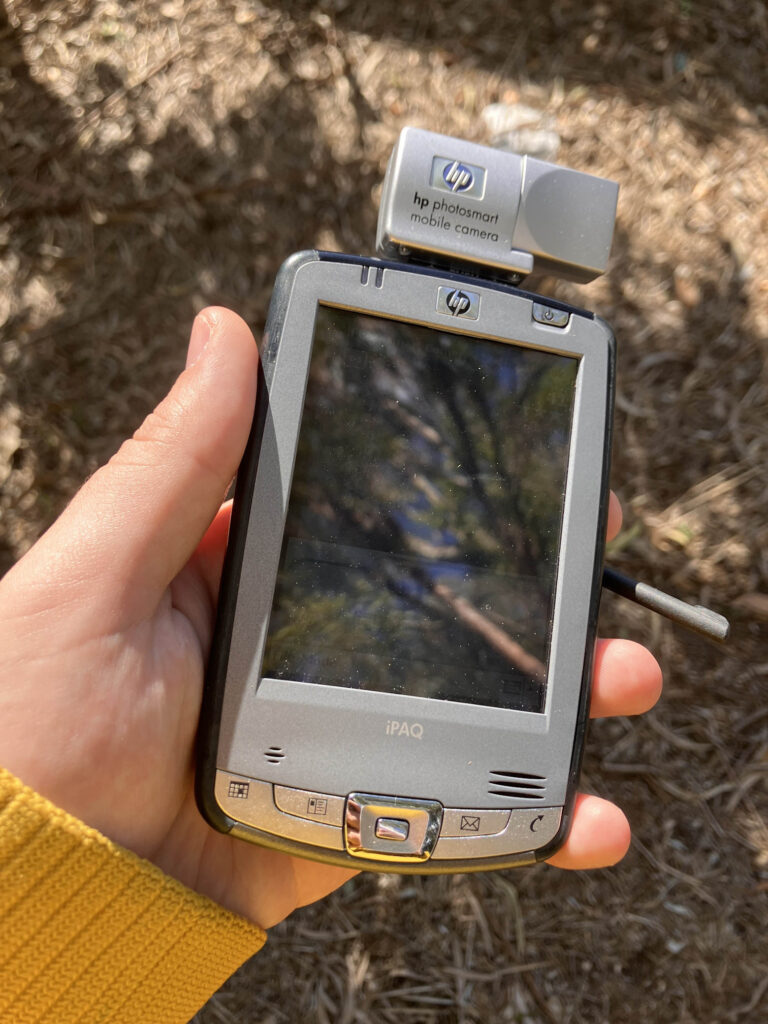

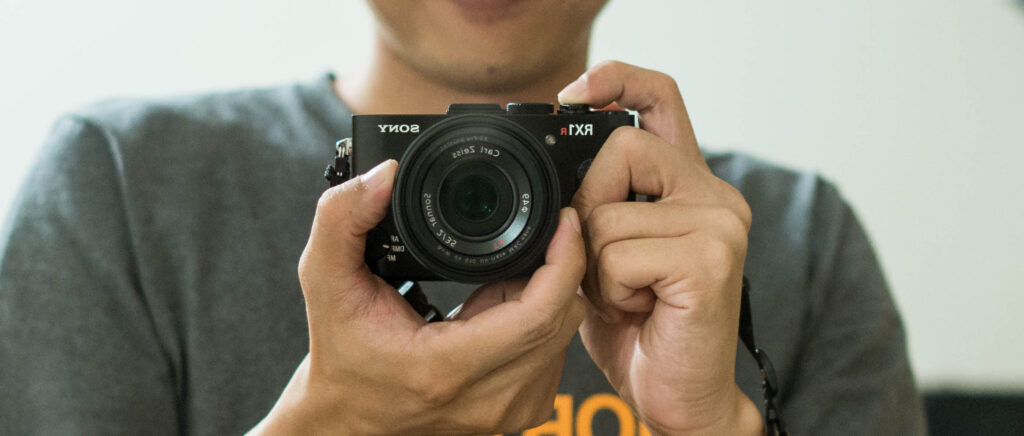

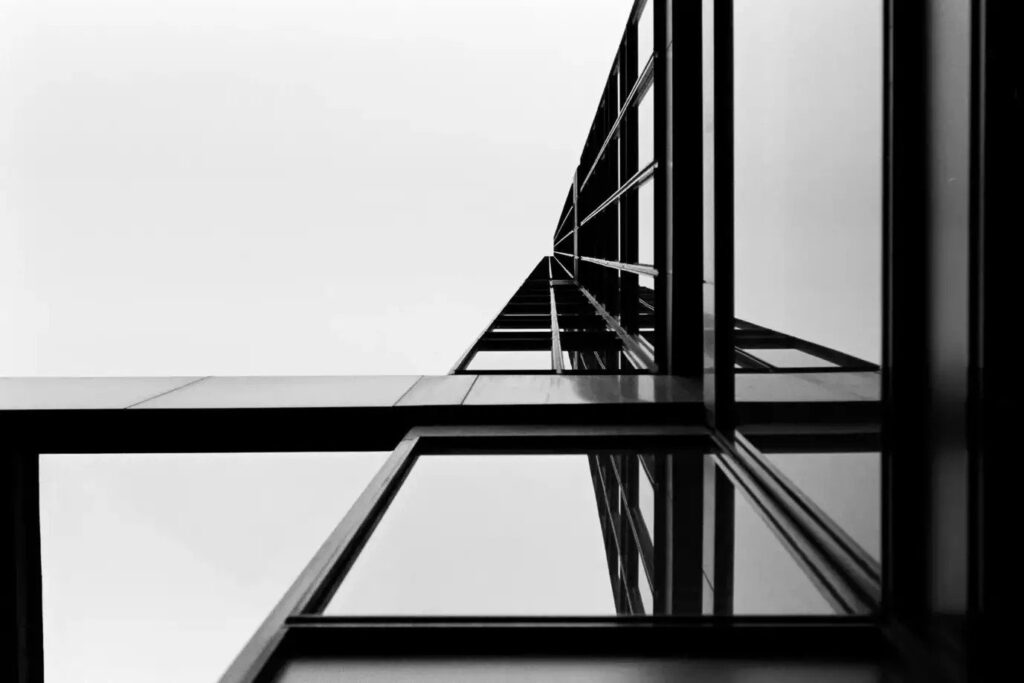


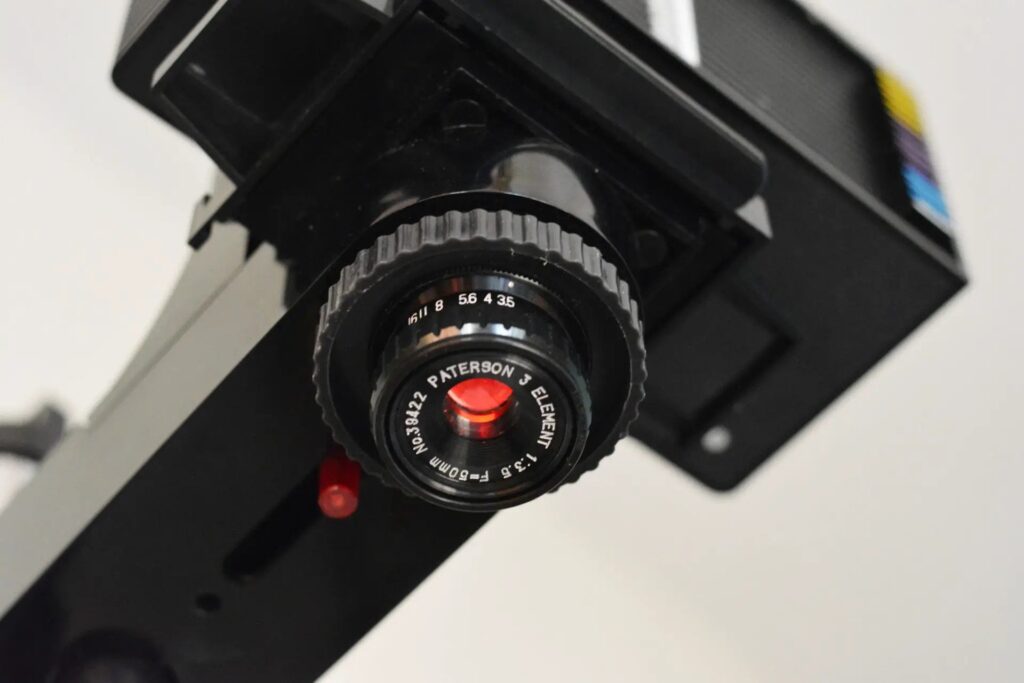
Comments
Andrew on Samsung Digimax L85 (and How It Replaced a Sigma DP2s)
Comment posted: 04/11/2025
If you also need a wider zoom, may I recommend the Olympus C7070? That’s a rare 7MP beast with a decent wide angle zoom and it takes lovely photos
Comment posted: 04/11/2025